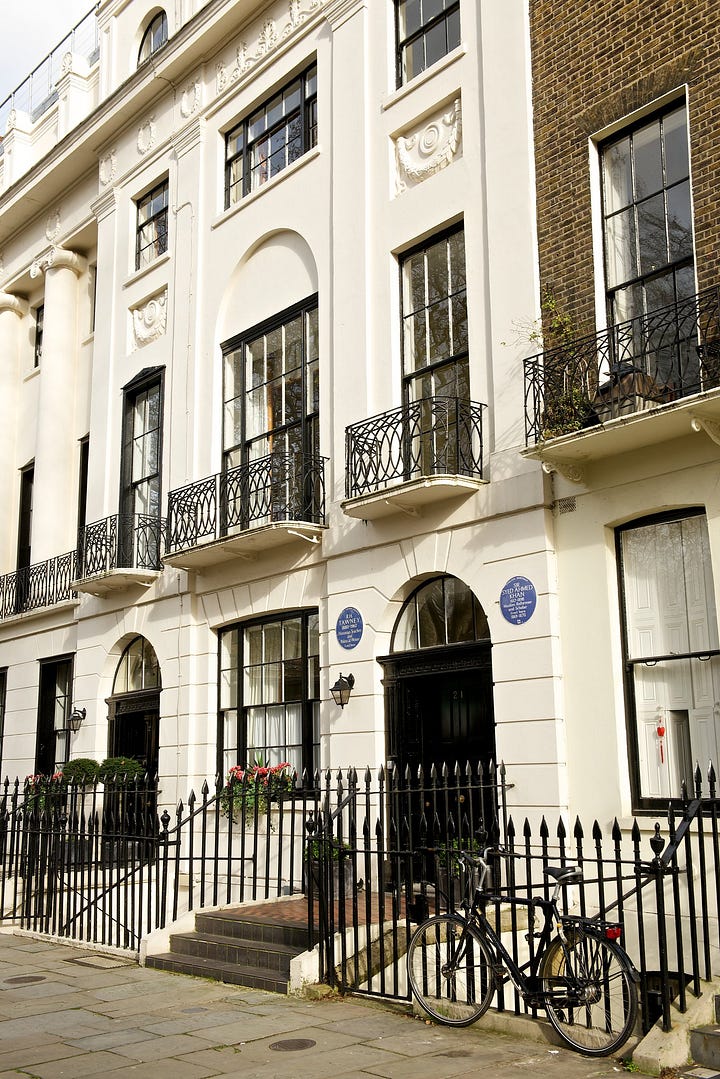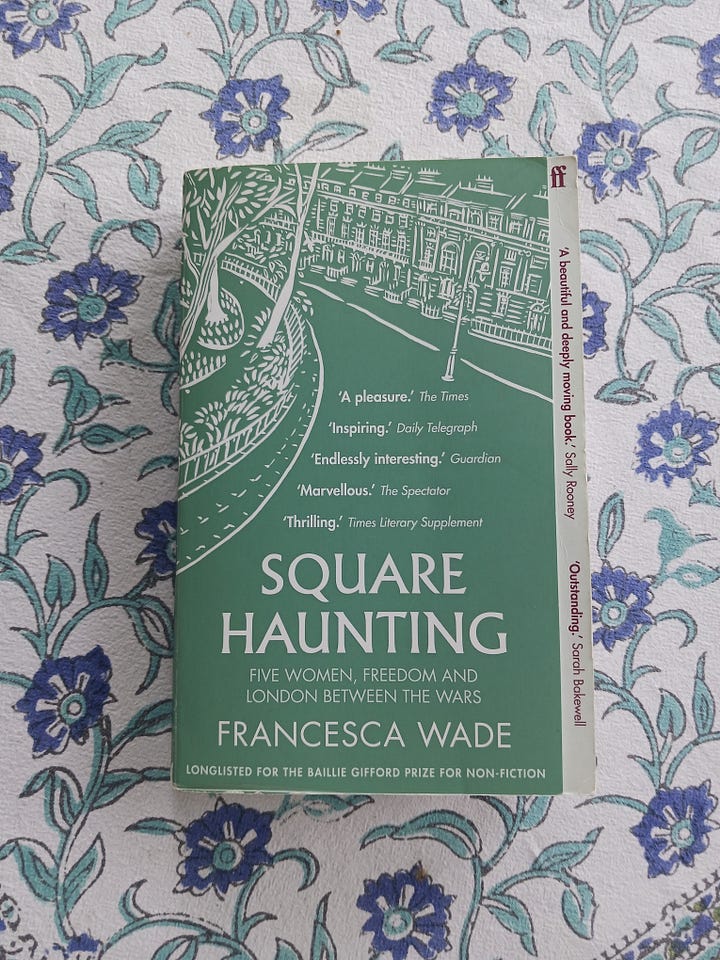For a too-brief period in 2010, I rented a flat in Bloomsbury. Bloomsbury is the literary heart of London, where you can’t fling a slim volume of verse out of the window without hitting a blue plaque to Virginia Woolf and chums.
I was writing my first novel. My flat was above the bookshop where they filmed the fabulously misanthropic sitcom Black Books; I worked at BMA House (formerly Tavistock House, where Dickens wrote Bleak House and Little Dorrit), I ate my sandwiches in Gordon Square, home to half the Bloomsbury Set, popped into the British Museum at lunchtime, hung out over tea and cakes in the London Review Bookshop. I began a blog, The Bloomsbury Bluestocking, which celebrated my love of the district.
One blue plaque that I was rather fond of marked the home of mystery author Dorothy L Sayers, whose Lord Peter Wimsey books I enjoy and admire hugely. Years after leaving Bloomsbury I encountered Francesca Wade’s marvellous Square Haunting, a history of five impressive women who lived in Mecklenburgh Square in the early 20th century. Not only was Mecklenburgh Square home at various times to Woolf and Sayers, but to poet HD, classicist Jane Harrison and historian Eileen Power.
Eileen Power was new to me, but I quickly fell in love with her. She was the second woman professor of economic history at the London School of Economics; she travelled widely in India, China and Japan; she researched and wrote erudite books about the economic work of women in convents and the medieval wool trade. So far, so academic. She also wore beautiful, glamorous clothes and jewellery and gave tremendous parties with excellent food and wine, followed by dancing in the kitchen. She was also an early broadcaster on the BBC, along with her sister Rhoda, a children’s writer and broadcaster.
When I came to write my first 1920s murder mystery novel, it was natural to want to set it in Bloomsbury. And I couldn’t resist beginning with one of Eileen Power’s celebrated parties. She used to invite a mixed crowd, so I was able to mix academics with actresses, artists with novelists. I felt sure that she would have been great friends with my worldy-wise American sleuth Mrs Jameson. The aristocratic would-be novelist at the party was a bit of a swipe at some of the Bloomsbury Set’s pretensions.
As I planned the novel, Blackmail In Bloomsbury, I returned to wander the streets of Bloomsbury as Virginia Woolf did before me. ‘I like this London life in early summer – the street sauntering and square haunting,’ she wrote in her diary, providing the title for Francesca Wade’s book. I mused over places for my characters to live, timed how long it took the victim to walk home from Mecklenburgh Square after the party, picked out a likely looking spot for a murderer to linger in St George’s Gardens. It was all tremendous fun. I went to the Slade School of Art, where one of my characters works, and inspected the streets around Kings Cross for a likely site for a brothel…
Tip of the week
One pitfall of using current-day London streets for a 1920s-set novel is that quite a lot of them were destroyed in the Blitz during the second world war and post-war reconstruction. I use online archive Ordnance Survey maps from the pre-war period to check street names and layouts from the period I’m writing about. As a bonus, you can see the tram lines that used to criss-cross the city and plan character’s journeys. If only you could also zoom in and use Street View to see what the streets looked like!
Favourite Research Moments from Blackmail In Bloomsbury
Discovering that Mecklenburgh Square was a haven for single ladies. Eileen Power declared: ‘My idea of life is to have enormous quantities of friends, but to live alone. And I do not know whether Girton or the study of medieval nunneries did more to convince me that I was not born to live in a community!’ Dorothy L Sayers wrote to her parents about her new home: ‘The landlady is a curious, eccentric-looking person with short hair and thoroughly understands that one wants to be independent. That is really all I want – to be left alone, and I can’t think why people won’t leave me!’
Mooching around Bedford Square, looking for a likely house for my American detective to lease, and being invited by workmen to take a peek inside one of the grand mansions on the square that was being renovated (bottom photo below).









“Harriet Vane sat at her writing table and stared out into Mecklenburg Square. The late tulips made a brave show in the Square garden and a quartet of early tennis players were energetically calling the score of a rather erratic and unpractised game." The anticipation of those couple of introductory sentences gets me every time…
Square Hauntings has been on my TBR pike for far too long!